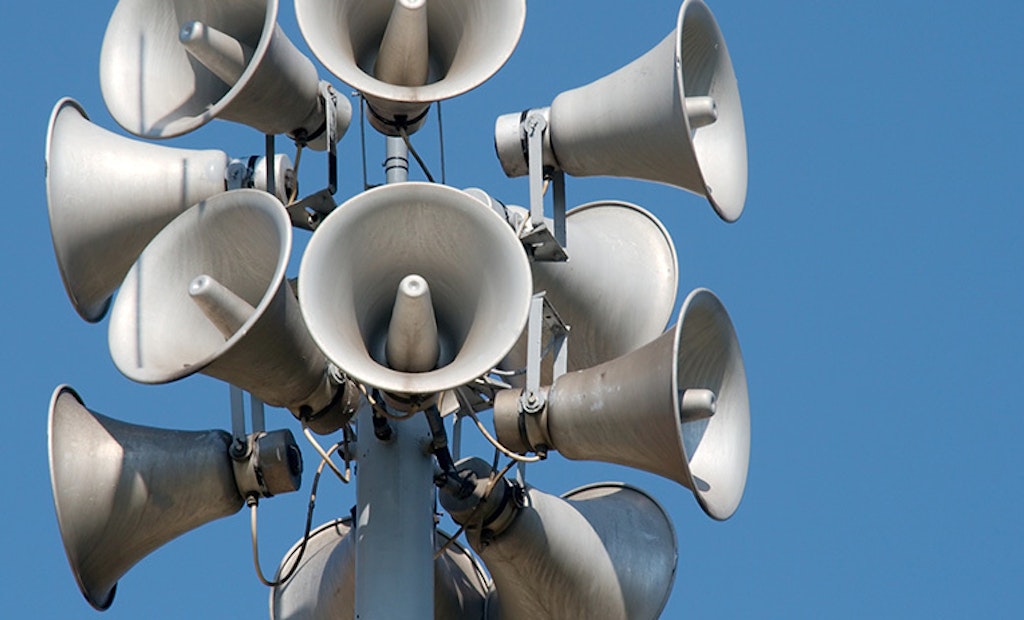When you work in a challenging environment — construction work, excavation, tree care and towing, to name a few — one of the challenges you face regularly is noise. So much noise from so many different sources that it becomes hard to recognize life-threatening warnings. As life and work get noisier, it gets harder to hear the alarms.
Why alarms become background noise
Mixed in with all of that noise are real safety signals: backup alarms, proximity alarms, height alarms, gas leak alerts, startup alerts and emergency sirens. Don’t forget the bells, chirps, beeps, horns, whistles, chimes and buzzes from tools, dashboards and even your phone. When they overwhelm and become a nuisance, you may actually ignore danger.
Here are some reasons why alarms become background noise. You’ve likely experienced several, if not all of them.
- Alarm fatigue. Most common in construction, mining, nuclear power and health care, this phenomenon occurs when one is exposed to a large number of frequent alarms and consequently becomes desensitized to them.
- Listener fatigue. This refers to the physiological impacts of prolonged exposure to noise. While symptoms include loss of hearing sensitivity, they also take their toll on the rest of your body in the form of exhaustion, discomfort and pain. Unlike noise-induced hearing loss, you can recover from listener fatigue.
- Apathy. You hear the alarm, but you don’t react. You might be avoiding distractions or automatically ignoring the alarm that “cried wolf.” Maybe you believe that your safety is out of your control and someone else will keep you from getting caught in, caved in or run over.
- Ignorance. New equipment or new employees combined with training gaps add up to a dangerous lack of awareness about what a bell, whistle or alert can mean.
- Equipment failure. Not the failure of equipment sounding the alarm, but the equipment that helps you hear the alarm. For example, if you depend on a spotter to notify you about danger, then two-way radio channel lockout and button mashing scenarios can block the warning from ever reaching you. Also, wearing traditional hearing protection can block your ability to hear an alarm, which is why some workers in challenging environments choose possible hearing damage as the lesser of two evils.
- Intense focus on your work. When you work in a challenging environment, you understandably have a difficult job that requires complete concentration. That’s fine as long as other safety measures or spotters are in place to keep you safe. But if you compromise your situational awareness without planning ahead, you expose yourself by focusing so intently that you don’t hear — or can’t react to — the alarms around you.
Pulling safety signals into foreground awareness
Almost 10 years ago, Occupational Health & Safety published the article, “The Sounds of Safety.” Author Linda Sherrard included a comprehensive warning signal checklist to help inform our tips to re-emphasize warning signals. They include:
- Customize your alarms to the level and types of hazards in your work zone. Use different sounding alarms for backup than you have for other proximity sensors. Make sure hazard notification signals are different than take-emergency-maneuvers signals. If every safety signal is a klaxon alarm capable of evacuating a small town in the event of an airstrike, alarm fatigue will set in fast.
- Make sure alerts include a visual notification as well as auditory.
- Train and inform employees, contractors and visitors on what different alarms mean and how they need to react if they hear them.
- When you add new equipment or hazards (e.g., dig a trench), notify and train all affected personnel on how the equipment functions, the possible risks and what the warning signals mean.
- If workers need hearing protection, make sure they are still able to hear alarms. If that’s not possible, then devise other strategies involving visual cues, physical warnings and spotters to keep them out of harm’s way.
- Don’t allow anyone to disable or circumvent alarms, and take disciplinary action when it happens. Some alarms become a nuisance, but disabling them is not worth the risk of a severe or fatal incident that can result in a shutdown or expensive lawsuit.
- Have a backup plan whenever possible. This could take the form of automatic shut-offs; public address announcements; audible alarms that grow louder, more frequent, or change pitch as a situation becomes more hazardous; or a code word or final warning alarm that is only used in extreme emergencies (save that klaxon for when you really need it).
- Increase situational awareness. Instead of using hearing protection that blocks out all noise, use a hearing protection system that muffles only the dangerous noise, allows users to control how much background noise they need to hear to enhance their safety, and also acts as a wireless team communication system so spotters, supervisors and other workers can talk hands-free without taking any attention away from the task at hand.
The health care industry is leading the charge to combat alarm fatigue. Construction, manufacturing and other industries may need to take a cue from what health care is doing to help make safety signals relevant again.
I can empathize with wanting to block out all the unnecessary noise. Just make sure you don’t put yourself at risk by blocking out the necessary noise, too.
Learn more about Sonetics wireless communication headsets here.





